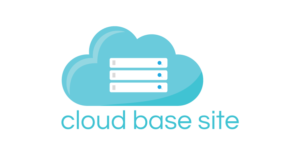Amazon Web Services (AWS) is a pioneer in the field of cloud computing and provides a wide range of services that are specifically designed to fulfill the various demands of businesses. Pricing is one of the major issues that companies adopting AWS must deal with. For businesses looking to precisely estimate their cloud expenses, the AWS Pricing Calculator emerges as a vital tool. In the meantime, intercompany transactions are significantly shaped by transfer pricing methods. The AWS Pricing Calculator’s complexities are examined in this article, along with a number of transfer pricing methods that companies might use.
How to Use the AWS Pricing Calculator
The days of expensive upfront investments for IT infrastructure expenses are long gone. AWS has transformed the cloud sector by providing a pay-as-you-go paradigm that makes resources affordable and accessible. However, proper cost estimation is essential to preserve budgetary control. Enter the AWS Pricing Calculator, an effective tool that enables companies to estimate their costs prior to starting their cloud adventure.
Users can choose services, set use criteria, and get cost estimates using the AWS Pricing Calculator’s user-friendly interface. This makes it possible for companies to match their cloud strategy with their financial limitations, resulting in seamless planning and financial management. The calculator delivers a thorough perspective of future prices and encourages educated decision-making by offering a variety of customization options, including service choices, geographic regions, and consumption patterns.
Methods of Transfer Pricing
In order to provide a fair and accurate cost distribution across the many entities within the same corporate group, efficient transfer pricing methods are crucial for organizations that operate across international borders. Let’s look at a few of the most popular methods of transfer pricing:
The Comparable Uncontrolled Price (CUP) Method compares the cost of a controlled transaction to the cost of a comparable transaction involving unaffiliated parties. It places a strong emphasis on matching intercompany prices to going market rates to reduce the possibility of tax-related disagreements.
The resale price method (RPM) involves calculating the price at which a good is sold to an unconnected third party and deducting the applicable gross profit margin. This technique is appropriate for retail and distribution operations since it guarantees that the selling entity will keep a respectable profit margin.
Cost Plus Method (CPM):
CPM entails marking up the cost incurred by the supplying company as necessary. This approach makes sure that the supplying entity makes a profit that is both acceptable and sufficient to cover its production and service expenditures.
The Transactional Net Margin Method (TNMM) contrasts the net profit margin attained in comparable uncontrolled transactions with the net profit margin obtained from a managed transaction. It emphasizes on how profitable each of the parties is in comparison to one another.
Profit Split technique:
When the contributions of several parties are entangled, the profit split technique divides the total profit according to the value that each party contributes to the overall operation. When transactions and prices on external markets cannot be fairly compared, this strategy is especially helpful.
AWS Pricing Calculator and Transfer Pricing Harmonization
Particularly for international organizations using cloud services across their subsidiaries, the convergence of the AWS Pricing Calculator and transfer pricing methods is noteworthy. In order to ensure that expenses apportioned across various entities reflect market realities and internal contributions, the AWS Pricing Calculator’s ability to reliably estimate costs aligns with transfer pricing methods.
Businesses can improve transparency and accountability in cross-border transactions by adding estimated cloud charges from the AWS Pricing Calculator to the transfer pricing framework. Making informed decisions, adhering to tax laws, and resource optimization are all made easier by this synergy.
Conclusion
the AWS Pricing Calculator enables companies to budget effectively for their cloud migration. Likewise, in global business organizations, transfer pricing methods offer a structured framework for fair cost allocation. Organizations can begin their cloud transformation while adhering to ethical financial management and equitable resource allocation by utilizing these technologies together.
